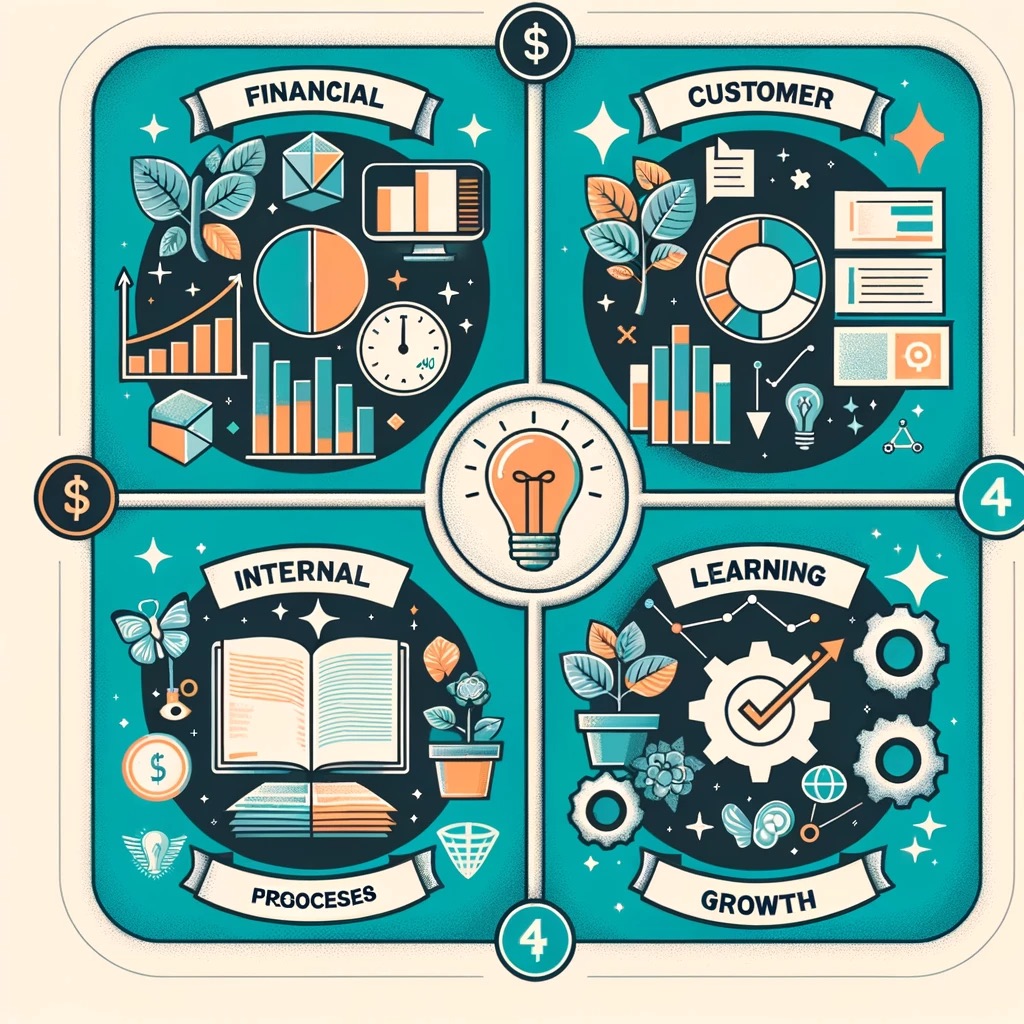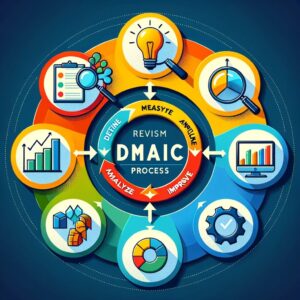Balanced Scorecard

The Balanced Scorecard is a strategic planning and management system extensively used in business and industry, government, and nonprofit organizations worldwide. It was originally developed by Dr. Robert Kaplan and Dr. David Norton as a framework for measuring organizational performance using a more balanced set of perspectives.
Key Components:
1. Financial Perspective: This involves traditional financial metrics such as profit, revenue growth, and cost management, which are crucial for understanding the economic consequences of actions taken in the other three perspectives.
2. Customer Perspective: This focuses on customer satisfaction and market share goals. Key performance indicators might include customer satisfaction scores, percentage of sales from new products, or customer retention rates.
3. Internal Business Processes Perspective: This perspective looks at internal operational goals and outlines the key processes necessary to deliver the customer objectives. Metrics might include process efficiency, throughput rates, and quality measures.
4. Learning and Growth Perspective: This encompasses employee training and corporate cultural attitudes related to both individual and corporate self-improvement. Metrics could be employee satisfaction, rate of improvement, and knowledge management.
Application:
– To implement a Balanced Scorecard, an organization must clearly understand its vision and strategy and then translate them into action. This involves creating a series of cause-and-effect relationships to link desired outcomes with drivers.
– Balanced Scorecards often go hand in hand with strategic initiatives and action plans to achieve goals in the four perspectives.
Practical Use Cases:
1. Financial Services: Banks and financial institutions can use it to balance financial objectives with customer service metrics like satisfaction and process efficiency metrics in loan processing or new account openings.
2. Manufacturing: In a manufacturing context, it can be used to balance financial goals with production efficiency, quality control measures, and workforce development.
3. Healthcare: Hospitals and clinics might use it to balance financial sustainability with patient care metrics, operational efficiency in patient processing, and staff training and development.
Advantages:
– Promotes strategic alignment.
– Encourages forward-thinking strategy.
– Balances short and long-term goals.
Limitations:
– Requires a clear understanding of organization’s strategy and goals.
– Can be complex to implement and maintain.
– Risk of focusing too narrowly on the measures, rather than the underlying strategy.



